
The Shining is a 1977 horror novel by American author Stephen King. It is King's third published novel and first hardcover bestseller; its success firmly established King as a preeminent author in the horror genre. The setting and characters are influenced by King's personal experiences, including both his visit to The Stanley Hotel in 1974 and his struggle with alcoholism. The novel was adapted into a 1980 film and a 1997 miniseries. The book was followed by a sequel, Doctor Sleep, published in 2013, which in turn was adapted into a film of the same name in 2019.

The Tommyknockers is a 1987 science fiction novel by Stephen King. While maintaining a horror style, the novel is an excursion into the realm of science fiction for King, as the residents of the Maine town of Haven gradually fall under the influence of a mysterious object buried in the woods.

Desperation is a horror novel by American author Stephen King. It was published in 1996 at the same time as its "mirror" novel, The Regulators, itself published under King's Richard Bachman pseudonym. It was also made into a TV film starring Ron Perlman, Tom Skerritt and Steven Weber in 2006. The two novels represent parallel universes relative to one another, and most of the characters present in one novel's world also exist in the other novel's reality, albeit in different circumstances.

It is a 1986 horror novel by American author Stephen King. It was his 22nd book and the 17th novel written under his own name. The story follows the experiences of seven children as they are terrorized by an evil entity that exploits the fears of its victims to disguise itself while hunting its prey. "It" primarily appears in the form of Pennywise the Dancing Clown to attract its preferred prey of young children.

The Stand is a post-apocalyptic dark fantasy novel written by American author Stephen King and first published in 1978 by Doubleday. The plot centers on a deadly pandemic of weaponized influenza and its aftermath, in which the few surviving humans gather into factions that are each led by a personification of either good or evil and seem fated to clash with each other. King started writing the story in February 1975, seeking to create an epic in the spirit of The Lord of the Rings. The book was difficult for him to write because of the large number of characters and storylines.

'Salem's Lot is a 1975 horror novel by American author Stephen King. It was his second published novel. The story involves a writer named Ben Mears who returns to the town of Jerusalem's Lot in Maine, where he lived from the age of five through nine, only to discover that the residents are becoming vampires. The town is revisited in the short stories "Jerusalem's Lot" and "One for the Road", both from King's story collection Night Shift (1978). The novel was nominated for the World Fantasy Award in 1976 and the Locus Award for the All-Time Best Fantasy Novel in 1987.

The Regulators is a novel by American author Stephen King, writing under the pseudonym Richard Bachman. It was published in 1996 at the same time as its "mirror" novel, Desperation. The two novels represent parallel universes relative to one another, and most of the characters present in one novel's world also exist in the other novel's reality, albeit in different circumstances. Additionally, the hardcover first editions of each novel, if set side by side, make a complete painting, and on the back of each cover is also a peek at the opposite's cover.
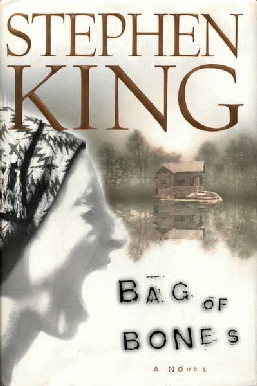
Bag of Bones is a 1998 horror novel by American writer Stephen King. It focuses on an author who suffers severe writer's block and delusions at an isolated lake house four years after the death of his wife. It won the 1999 Bram Stoker Award for Best Novel, the 1999 British Fantasy Award for Best Novel, and the 1999 Locus Award for Best Dark Fantasy/Horror Novel. The book re-uses many basic plot elements of Daphne du Maurier's Rebecca, which is directly referenced several times in the book's opening pages; however, the relation of these elements to the plot and characters is markedly different. When the paperback edition of Bag of Bones was published by Pocket Books on June 1, 1999 (ISBN 978-0671024239), it included a new author's note at the end of the book, in which Stephen King describes his initial three-book deal with Scribner, and devotes most of the piece describing the origins of the then-forthcoming Hearts in Atlantis.

A Return to Salem's Lot is a 1987 American vampire film co-written and directed by Larry Cohen and starring Michael Moriarty, Andrew Duggan, Samuel Fuller, Evelyn Keyes, and June Havoc. A theatrical sequel to the 1979 miniseries Salem's Lot, the film follows an anthropologist and his son who encounter supernatural incidents and vampirism in the small town of Jerusalem's Lot.

The Stand is a 1994 American post-apocalyptic television miniseries based on the 1978 novel of the same name by Stephen King. King also wrote the teleplay and has a minor role in the series. It was directed by Mick Garris, who previously directed the original King screenplay/film Sleepwalkers (1992). In order to satisfy expectations from King fans and King himself, The Stand is a mostly faithful adaptation to the original book, with only minor changes to material that would otherwise have not met broadcast standards and practices, and in order to keep ABC content.
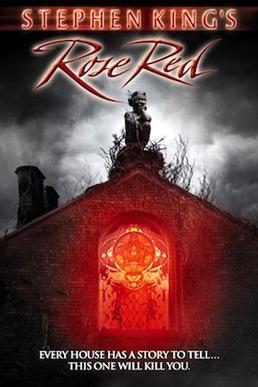
Rose Red is a 2002 American television miniseries scripted by horror novelist Stephen King, directed by Craig R. Baxley, and starring Nancy Travis, Matt Keeslar, Julian Sands, Kimberly J. Brown, David Dukes, Melanie Lynskey, Matt Ross, Emily Deschanel, Judith Ivey, and Kevin Tighe. It was filmed in Lakewood, Washington. The plot focuses on a reputedly haunted mansion located in Seattle, Washington, named Rose Red. Due to its long history of supernatural events and unexplained tragedies, the house is investigated by parapsychologist Dr. Joyce Reardon and a team of gifted psychics.
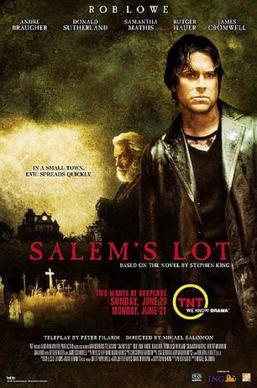
Salem's Lot is a 2004 two-part television miniseries which first aired on TNT on June 20 and ended its run on June 21, 2004. It is the second television adaptation of Stephen King's 1975 vampire novel 'Salem's Lot following the 1979 miniseries adaptation.

Salem's Lot is a 1979 American two-part vampire miniseries based on the 1975 horror novel 'Salem's Lot by Stephen King. Directed by Tobe Hooper and starring David Soul and James Mason, the plot concerns a writer who returns to his hometown and discovers that its citizens are turning into vampires. Salem's Lot combines elements of the vampire film and haunted house subgenres of horror.
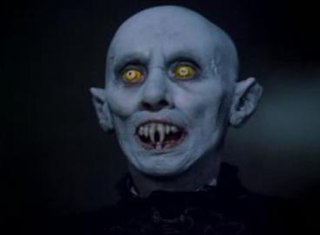
Kurt Barlow is a fictional character and the main antagonist of Stephen King's 1975 horror novel 'Salem's Lot. The character is a powerful vampire who moves to the Maine town of Jerusalem's Lot with the intent to form a vampire colony of its residents. Due to his own predations as well as those of the residents he turns, the entire town is ultimately overrun by vampirism; only a few of the residents escape. Although his true age is unknown, he claims to be so old that he predates the founding of Christianity by centuries.
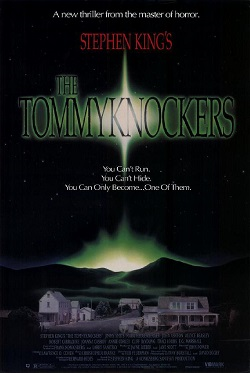
The Tommyknockers is a 1993 television miniseries based on the 1987 novel of the same name by Stephen King. Broadcast on ABC, it was directed by John Power, adapted by Lawrence D. Cohen and starred Marg Helgenberger and Jimmy Smits.

Bag of Bones or Stephen King's Bag of Bones, is an American horror television miniseries adaptation of Stephen King's 1998 novel of the same name. Directed by Mick Garris from Matt Venne's screenplay, it was first aired in 2011 on the A&E Network in two parts. When shown on British Channel 5 on 29 December 2012, it was however shown as a single 2+1⁄2-hour film.
Eugene Lipinski is a British-Canadian character actor and screenwriter. He was born in Wansford Camp, Soke of Peterborough, England, and raised in Regina, Saskatchewan, Canada. He began acting at the age of twelve in amateur theatre. After graduating from the University of Regina, he returned to the UK and attended the Royal Academy of Arts as well as the Drama Studio London.

It is a 1990 ABC two-part psychological horror drama miniseries directed by Tommy Lee Wallace and adapted by Lawrence D. Cohen from Stephen King's 1986 novel of the same name. The story revolves around a predatory monster that can transform itself into its prey's worst fears to devour them, allowing it to exploit the phobias of its victims. It mostly takes the humanoid form of Pennywise, a demonic clown. The protagonists are The Lucky Seven, or The Losers Club, a group of outcast kids who discover Pennywise and vow to kill him by any means necessary. The series takes place over two different time periods, the first when the Losers first confront Pennywise as children in 1960, and the second when they return as adults in 1990 to defeat him a second time after he resurfaces.

The Shining is an American supernatural horror media franchise that originated from the 1977 novel of the same name by Stephen King. The novel was later adapted into a 1980 film and a 1997 television miniseries. King later wrote a 2013 sequel novel, Doctor Sleep, which was adapted to film in 2019.
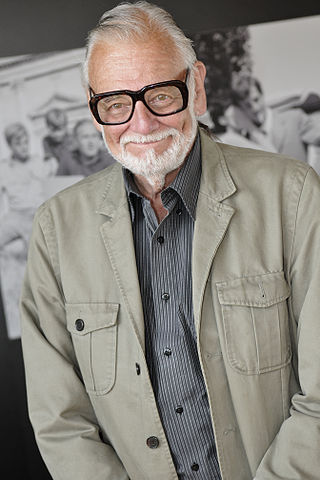
During a career that spanned several decades, the American film director George A. Romero worked on a number of projects which never progressed beyond pre-production under him. Some fell into development hell or were produced after he left production.



















